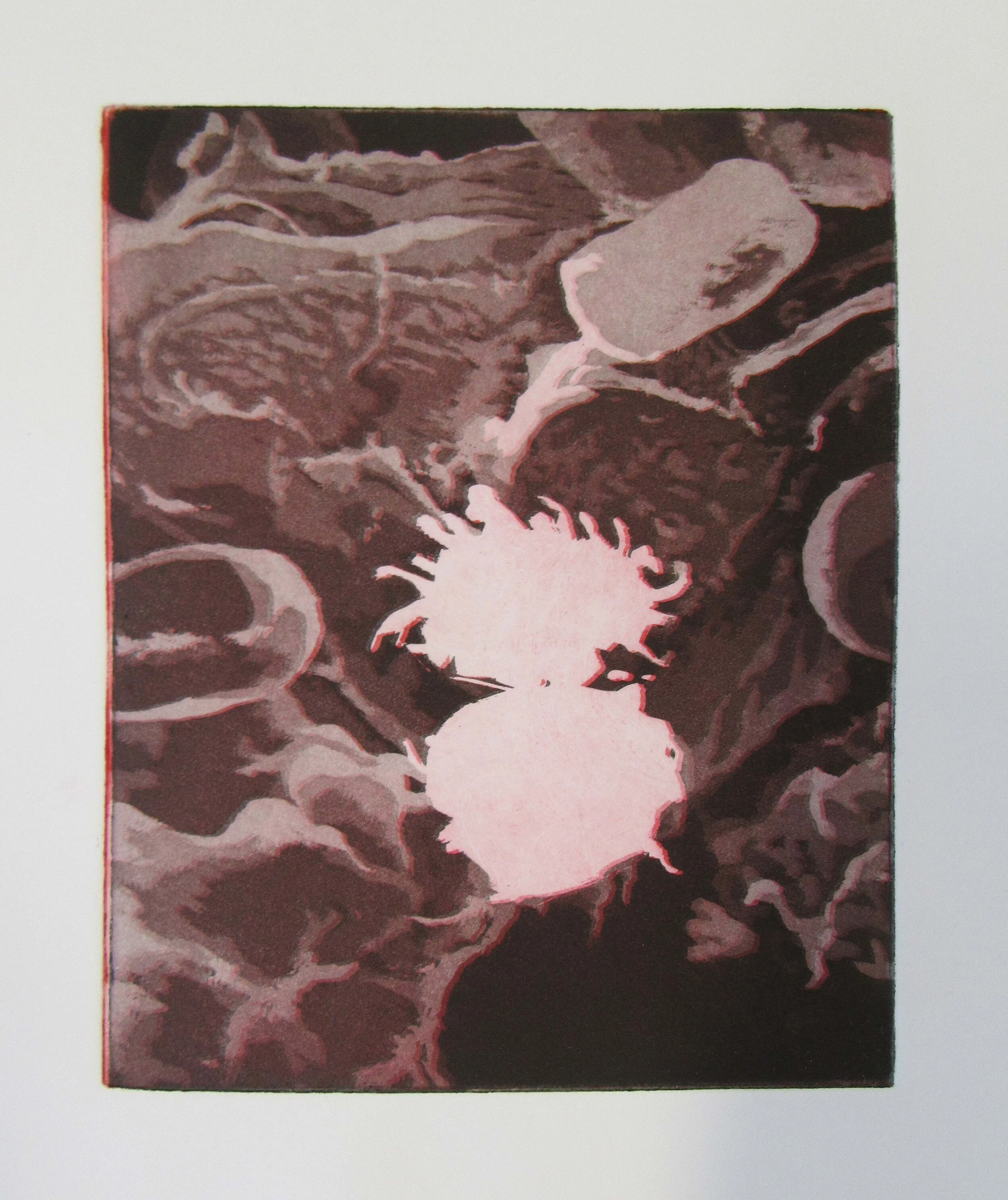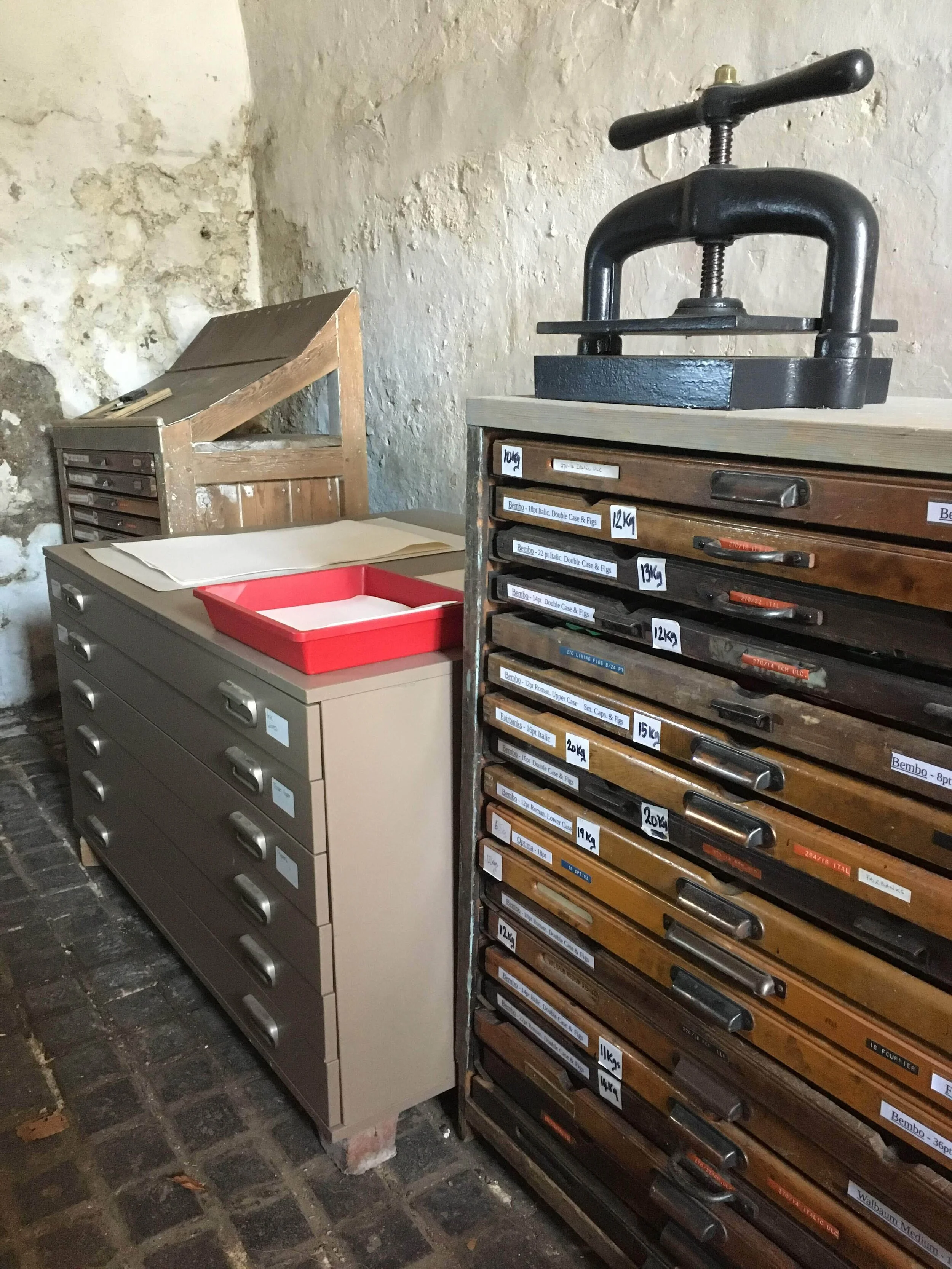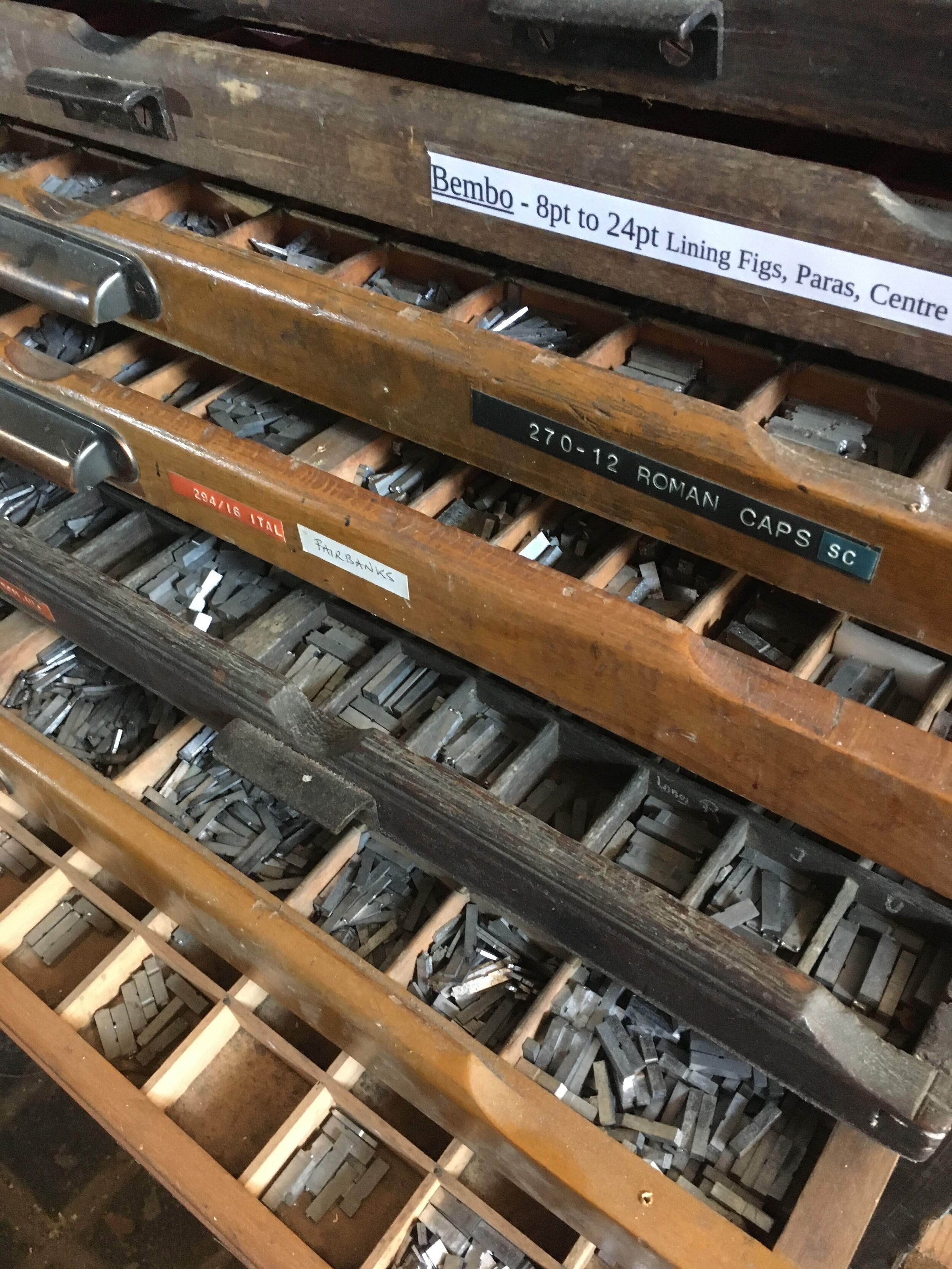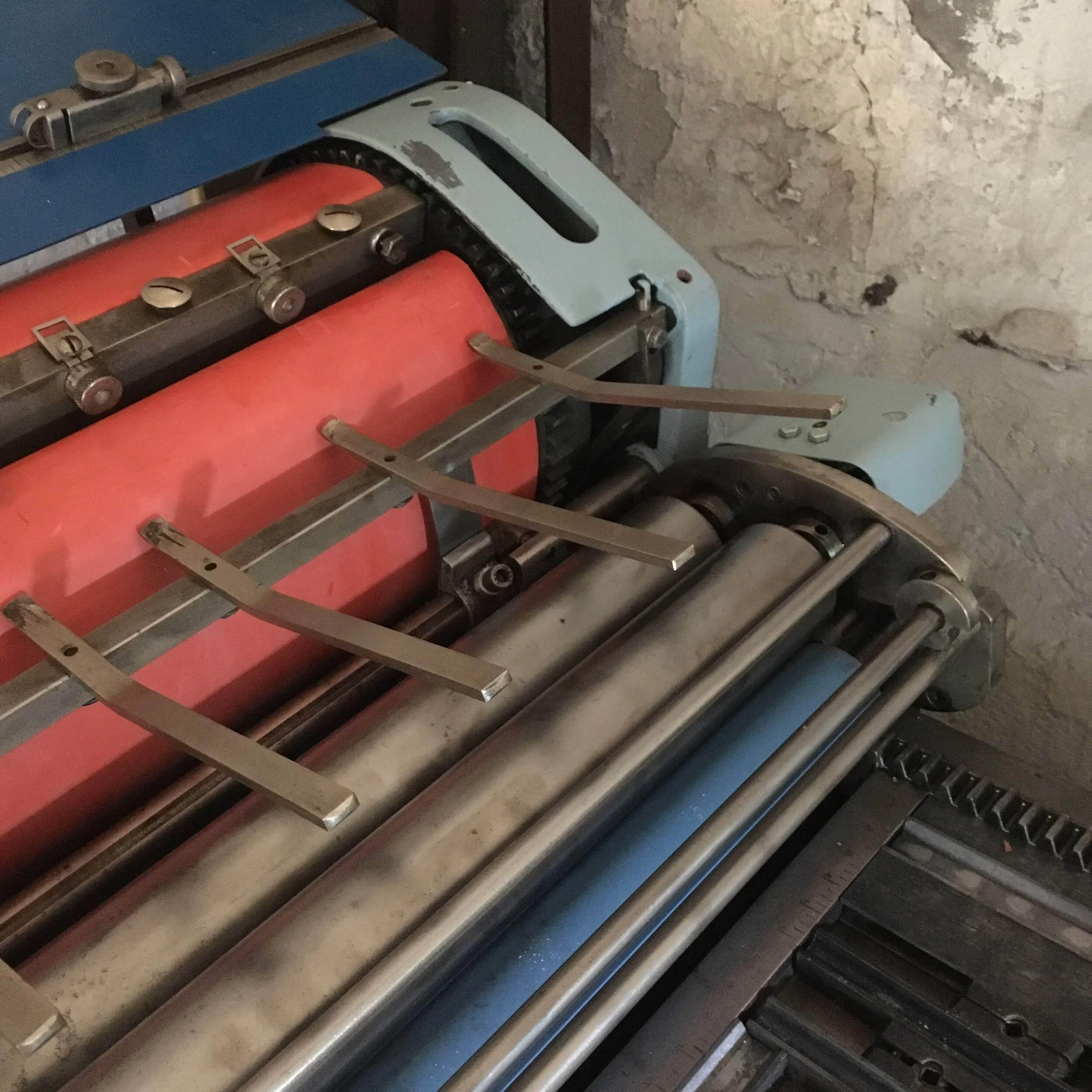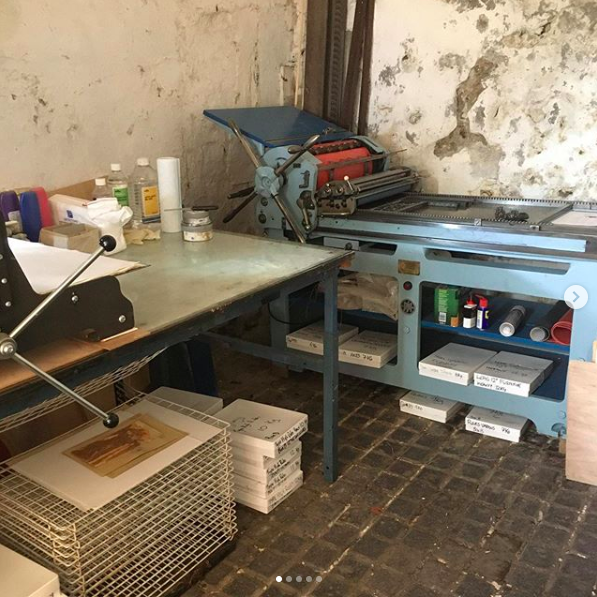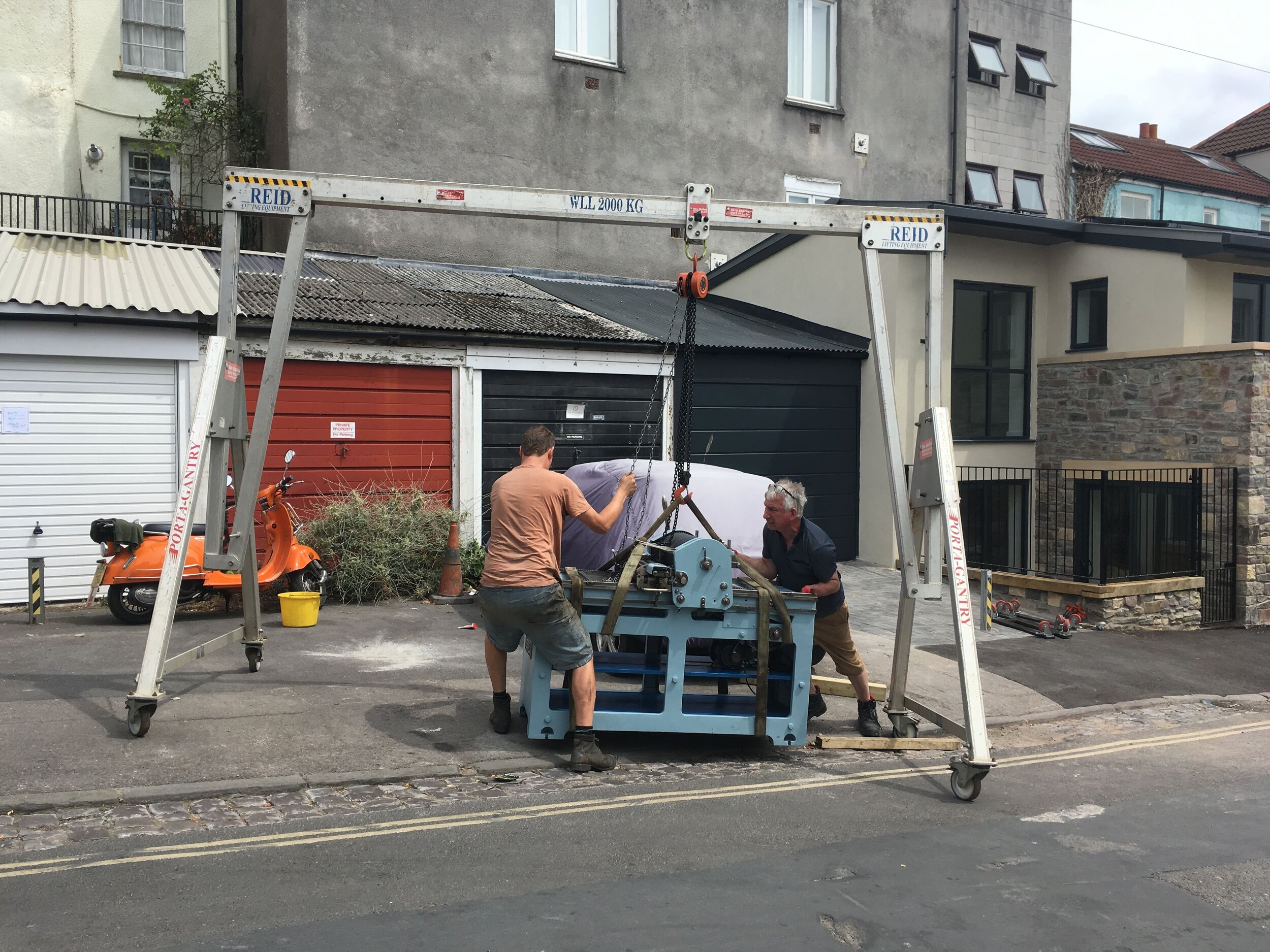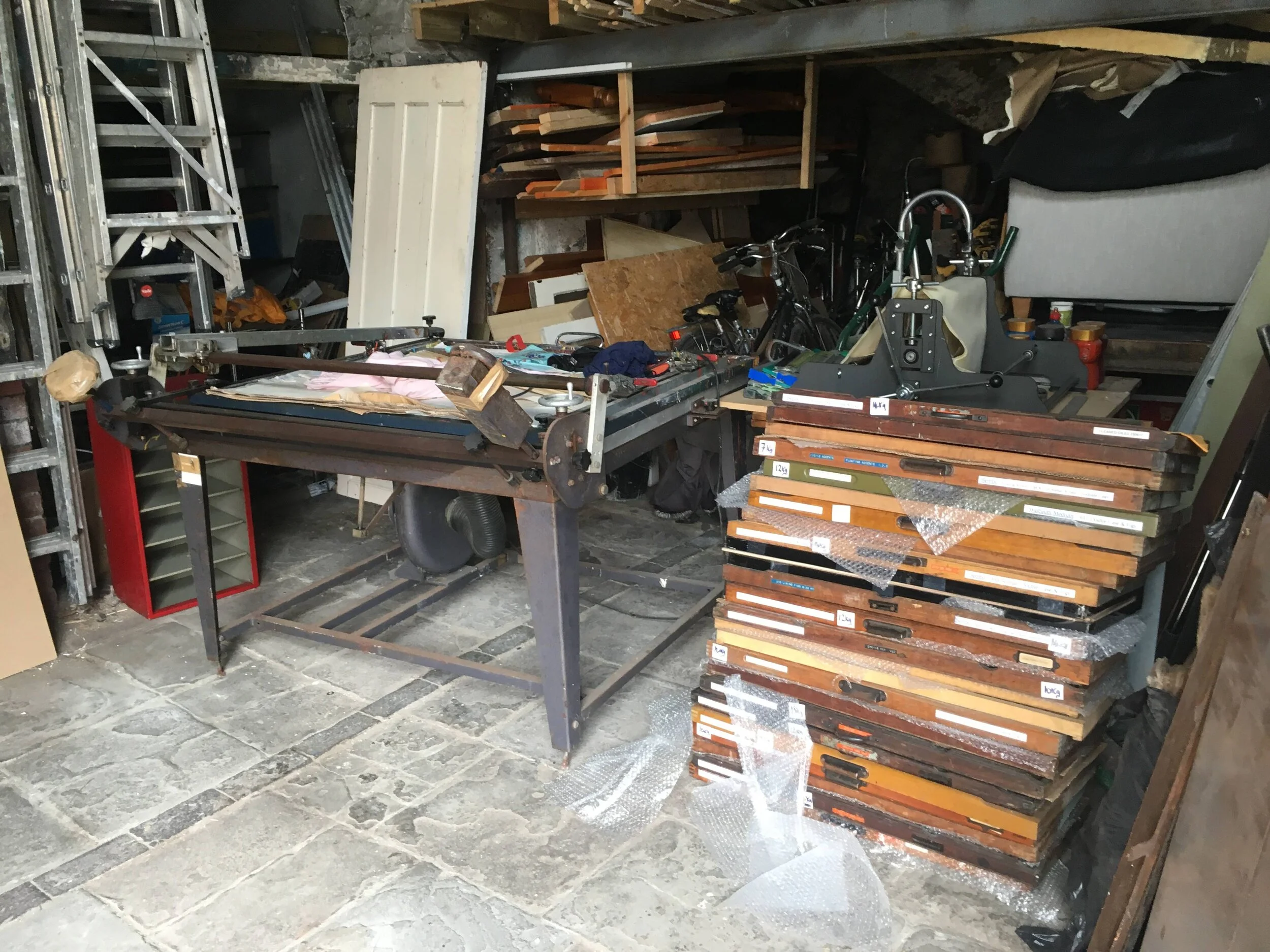Talking To: Maria Quintin
We talked to Bristol-based artist and printmaker, Maria Quintin, about her work, what inspires her and her plans for the future.
Hi Maria! We’d love to learn a bit more about you?
My name is Maria Quintin and I’m an artist! I grew up in the woods of Vassals Park in Oldbury Court, and am a nature girl at heart. This is definitely greatly reflected in my work.
Tell us about your art?
I work in any and every printmaking method, from screen to litho, relief to intaglio and everything in between. I have a special interest in the lesser known methods such as mezzotint and pressure printing (recently developing my own kind of monotype screen printing method which has been interesting!) I also produce work on a variety of subjects, all inspired by nature. I'm probably best known for my microscopic prints, as I did a three-year project on it during and just after university, so a lot of the work I've sold recently has been the run-off from that.
How did you get into doing what you do now?
What has set my current practice in motion is really quite hard to tell. I did a surprising amount of printmaking at school (which was unusual at the time, but we had fantastic art and textiles departments), and I did art, textiles and photography A-level, and for my photography, I focused on dark-room work which is very similar to printmaking.
I didn't want to go to university, so instead did a foundation course, specialised in printmaking, and applied for illustration at UWE. I didn't get in, but the head of drawing and print gave me an unconditional offer and here we are! I fell in love with print and it's infinite possibilities and got incredibly scared of losing access to the crazy good UWE facilities and overcompensated a bit, ending up with access to three studios as well as my home one upon graduation.
When I graduated, I became a print technician at SGS college, alongside which I had an amazing scholarship with UWE and Spike Print Studio (the biggest open-access print facility in the South West). I have since moved on to become a member tech at Spike Island and I love it there. I work there one night a week and the rest of the time I’ve spent setting up my own home studio, as well as using the amazing Spike facilities to produce my own work and have become a full-time freelancer.
You said that you use art to express and investigate the complexity of nature and spirituality - can you tell us more about that?
Normally when I produce work, it’ll all start with a question. The microscopic series, for example, all started with me looking down my microscope at a little house fly I found on the windowsill. It had such beauty and interest that I felt it had to be recorded and shared, and it all spiralled from there.
As far as expressing spirituality, as a Christian, I find the complexity of nature something infinitely interesting and worth exploring and sharing. Each hair, scale, cell, all working together to perfection. But my work has a more generalised spirituality behind it. The abstract nature and use of colour can evoke a calm and contemplative refection that I always hope my viewers can enjoy.
Has your art always been like this or has it evolved?
I’ve been creating artwork for as long as I can remember. I was raised in a creative household and my mum has taught me pretty much everything I know. Some of my earliest memories were finger painting, painting rocks or making sun prints. I remember walking around vassals with her collecting leaves and seeds and making a nature book all about the different trees we’d seen. I carefully stuck each specimen in and neatly documented a fact about each one in my best handwriting and we made it into a little book.
It’s always been about studying and documenting nature, or about improving my own practice and technique. Nothing has really changed apart from I hope my drawing skills have improved!
And what is it about the microscopic world you find so interesting and inspiring?
These works originally explored the idea of human discovery. It is estimated that there are 950,000 species of insect in the world, yet we only know of a fraction that actually exist. With over 10,000 new species of plants and animals being discovered every year, there are many species that we still do not know about and many areas of the world left unexplored.
I was influenced by collectors of curiosities and explorers and scientists such as Charles Darwin, Ernest Haeckel and Albertus Seba, and the age of great scientific and medical discovery in the 1700’s. Whilst researching these areas, I came across Micrographia by Robert Hooke. The illustrations meant that it was accessible to those who could not read, with wording that was relatable and endearing. It came out at a very exciting time for the scientific world, and a point where microscopic imagery was a wonder everyone wanted to behold. This book allowed everyone to access the scientific world.
The microscopic fly copperplate etchings take a closer look at an everyday animal in a way that most people would otherwise not be able to or even think of. It invites the viewer to stop and take a moment to consider the beauty and intricacy of its creation. The lack of an aquatint meant that different shading and tonal qualities could be added and altered with each print. The uniqueness of each print mirrors the uniqueness of each creature with no two being alike even within the same species.
This then spiralled to include more abstracted works using the cellular forms as a bases to explore colour, layering and scale. I was able to explore the abstract versus the literal and the microscopic versus the astronomic.
That’s amazing… It’s so clear how passionate you are about this. What is it like running your own business? What challenges do you face?
It’s not easy, but I like the challenge. Balancing time making and time setting up my studio and selling work and keeping up with social media and the website is a little insane. I understand why people employ others to oversee the online aspects whilst they concentrate on the production of work. So, everything is slow and time consuming and nothing is simple, but every single aspect is worth the time and effort and each little accomplishment heralds a huge satisfying joy and celebration.
I am, however, nearly there now. I’ve almost finished my website. I’ve set up an online shop. I’ve gotten my studio into a state where I can now use it (except it still needs electricity installed!) and I feel like I’m becoming established at least locally.
I still have challenges to overcome though. The ones on my mind now are selling online successfully (wish me luck, especially since I have not been able to sell at stalls of late), electrifying my studio (this is a huge expense that there isn’t a lot of funding available for, and a big commitment to the current property. It’s scary and huge, but I need to check this one off so I can start running workshops, events and make work during winter!) and, finally, taking on and fulfilling more bespoke commissions. This is something I beginning to set up, so am hoping to be able to do more of to financially support my practice.
It sounds like you’re doing so well and working through these though. What is your favourite thing about doing what you do?
I love the freedom and limitless creativity of what I do, but also the mystery. Every plate I produce, no matter how many times I’ve done the process before, will always find a way to surprise me. It is true that with printmaking, you just never know what is going to happen until you lift that paper, and sometimes it’s terrible and nothing has worked. But more often than not, it’ll produce something much more beautiful or interesting than you’d originally intended.
What about on the opposite side of the scale, if you've got a creative block, what cheers you up and inspires you?
When I am stuck, I just produce. Anything. If I’m drawn to a pencil, I’ll sketch, a paintbrush and I’ll paint. I find that with print, it’s really quite hard to get stuck because there’s so many things to do and one idea will just roll on and on to another and another.
If I ever get completely stuck, I might look at old work and ask myself “What would happen if I did this or changed that” and then I do it and find out.
I also have a little book with ideas in then I’ll scribble in when I get an idea for a new project. Once something has run its course, I’ll consult my little book and see if anything tickles my fancy.
What project are you working on now?
I’m not currently working on a major project at the moment. I have taken a break from my ‘This is a Print’ project (more information on my website) and am concentrating on smaller projects. I am currently working on illustrations for a book, experimenting with new hand-printed product ideas for my shop, and creating bespoke wedding invitations.
Do you have any plans for the future?
My major plans at the moment are to use the funds from any product sales to finish my print studio so I can start running workshops. I’d like to structure them in a way that you learn the traditional methods, and then learn a supplementary method that you can easily do at home without any special equipment so that you can leave with the knowledge you need to continue practicing at home without investing in the process too much. Then, if you really get on with it, you can invest a bit more and use the rest of the knowledge you learnt to get to grips with the more traditional and in-depth processes.
I’m also ever involved in trying to reduce and reuse as much waste as possible. I’d like these workshops to focus on this too – how one can use rubbish to produce art – but it’s also a main focus in all the work that I do.
Eventually, I’d like to continue my education in printmaking. Perhaps one day publish my finding during the ‘This is a Print’ project in a printmaking journal, but we’ll see what happens.
You can find out more about Maria by going to these sources.
Website: www.quintsprints.com
Facebook, Twitter, and Instagram: @quintsprints
Instagram, commercial works: @quintsprints_repeatpatterns
Instagram, bespoke wedding and event invitations: @quints_wedding_prints





